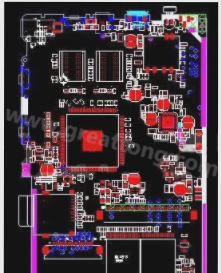Understanding Micro Short Circuit Issues in PCBs
Our PCB company recently tackled the challenge of micro short circuits inside circuit boards, commonly known as CAF or Glass Fiber Leakage. After thorough investigation, we identified the root cause of the problem, bringing relief to frustrated customers.
Challenges in Identifying CAF
Pinpointing the location of a short circuit is crucial. Cutting potential lines and examining vias, traces, and copper foil layers help narrow down the affected areas, enhancing the chances of detecting a micro short circuit.
Laboratory Analysis and Conflicting Findings
Engaging labs like X Special and XX Institute for cross-section analysis revealed differing opinions on the cause of CAF. While uncertainties persist due to inconsistent results, a detailed investigation is ongoing.

Proposed Solutions and Preventive Actions
The board factory suggested key improvements to combat CAF issues, including altering PP filling materials and modifying stacking structures. These changes aim to enhance resistance to CAF and strengthen PCB integrity.
Enhancing Quality Control Measures
Implementing stringent quality control measures during gold processing and utilizing advanced techniques like EDX for material analysis are vital steps in ensuring PCB reliability and performance.
Addressing Glass Fiber Cloth Cracks
Reports from laboratory inspections highlighted cracks in the glass fiber cloth, indicating potential CAF risks. Collaborating with experts and conducting thorough assessments can help mitigate these concerns.
Visualizing Short Circuit Confirmation
Visual cues, such as observing copper strips across holes, aid in confirming short circuits. Careful analysis and precise solutions are essential in resolving CAF issues effectively.
The Importance of ACF in PCB Analysis
The image displays a cross-section of a PCB board revealing a persistent short circuit. Prior to chemical treatment, a strip of the same material extends across a through hole and a blind hole. However, this may be attributed to copper inadvertently transferred from the through hole wall during the cutting process.
Understanding ACF (Conductive Anodic Filament)
ACF is closely associated with the leakage of conductive pad filaments. The treated slices in the image have been cleansed of potential contaminants post-grinding. Through EDX analysis, the presence of gold (Au) has been detected between the through hole and the blind hole.
Key Findings from EDX Analysis
- The gold element (Au) pinpointed by EDX is positioned first between the through hole and the blind hole.
- Further analysis reveals the gold element (Au) at the second position between the through hole and the blind hole.





 العربية
العربية 简体中文
简体中文 Nederlands
Nederlands English
English Français
Français Deutsch
Deutsch Italiano
Italiano 日本語
日本語 한국어
한국어 Português
Português Русский
Русский Español
Español ไทย
ไทย